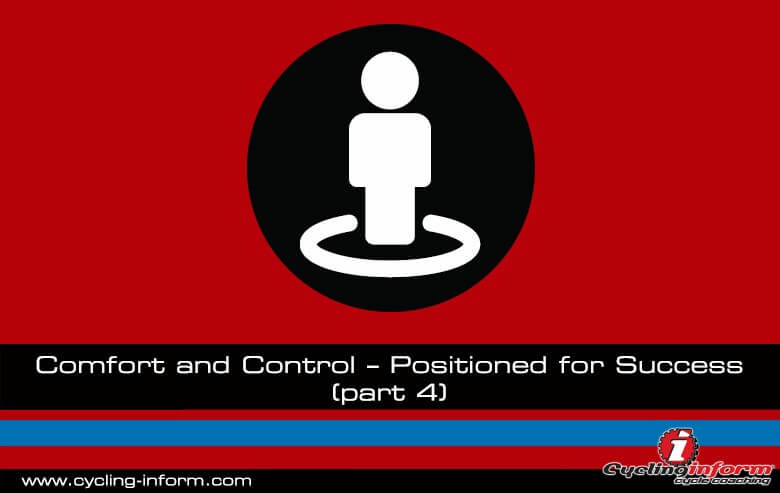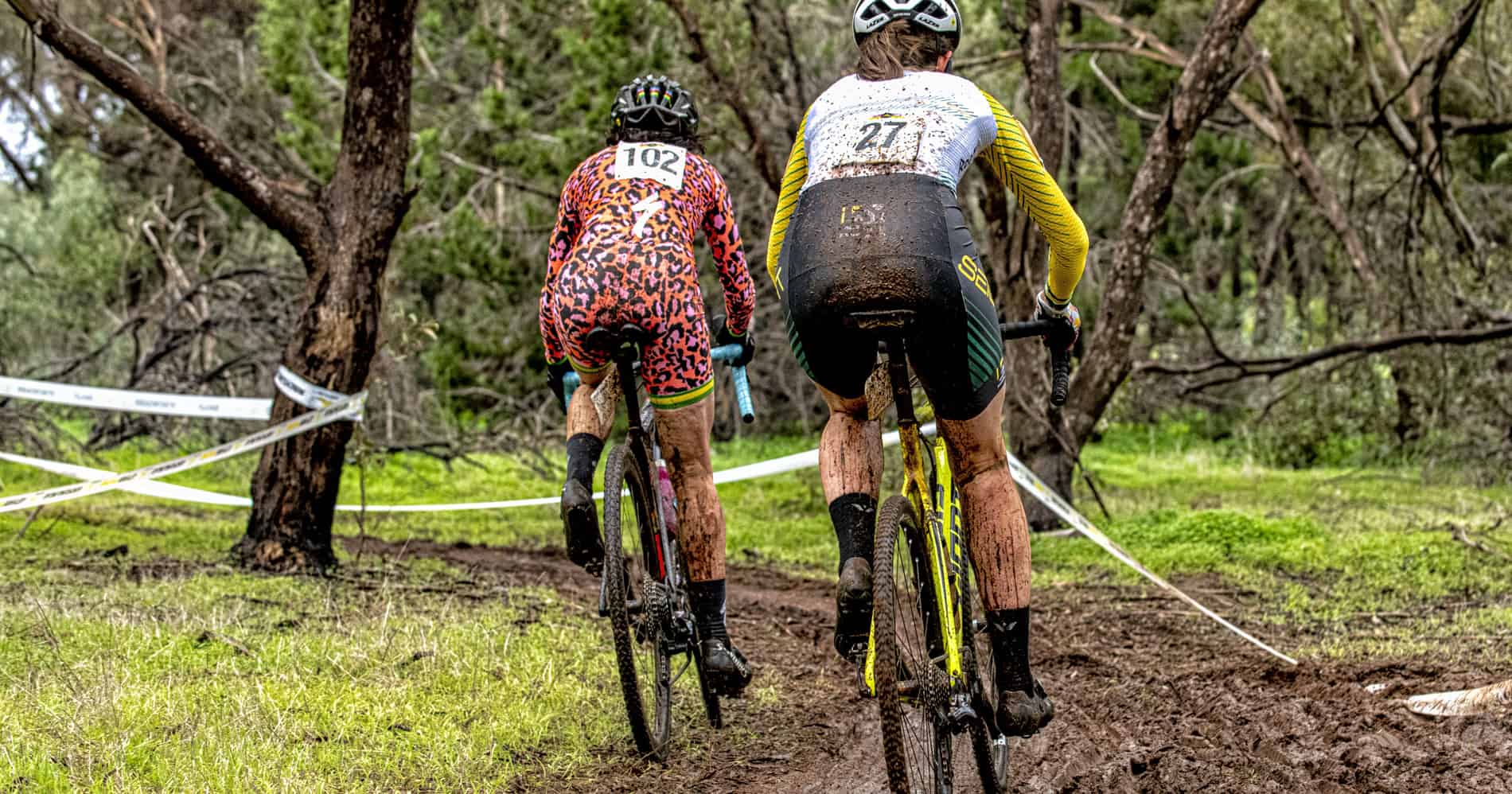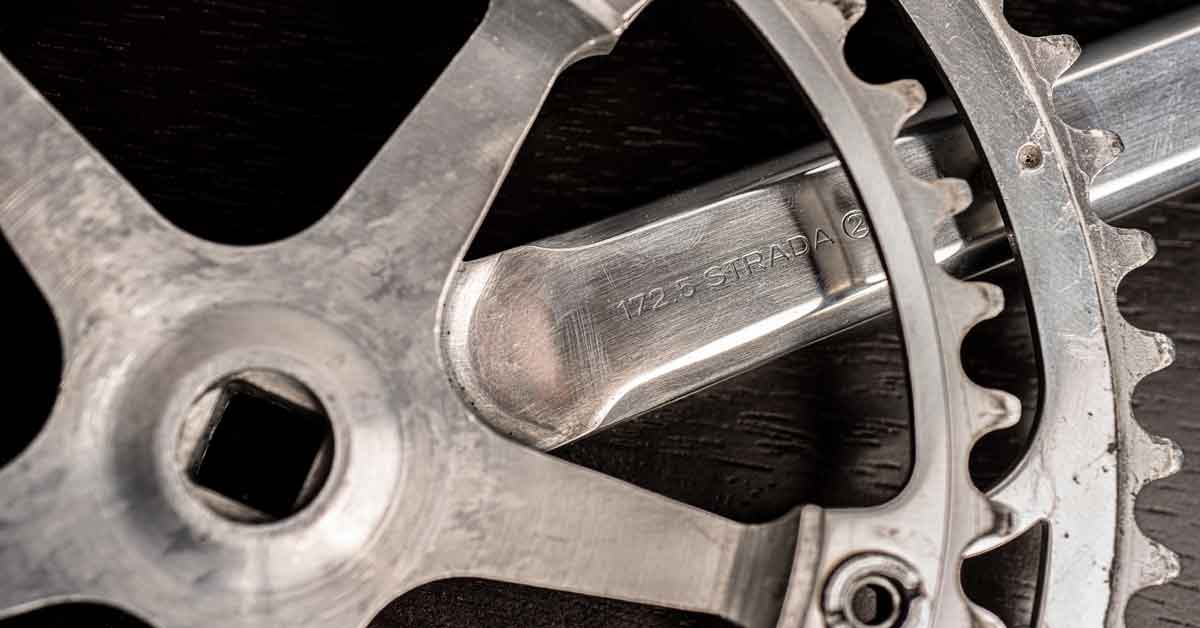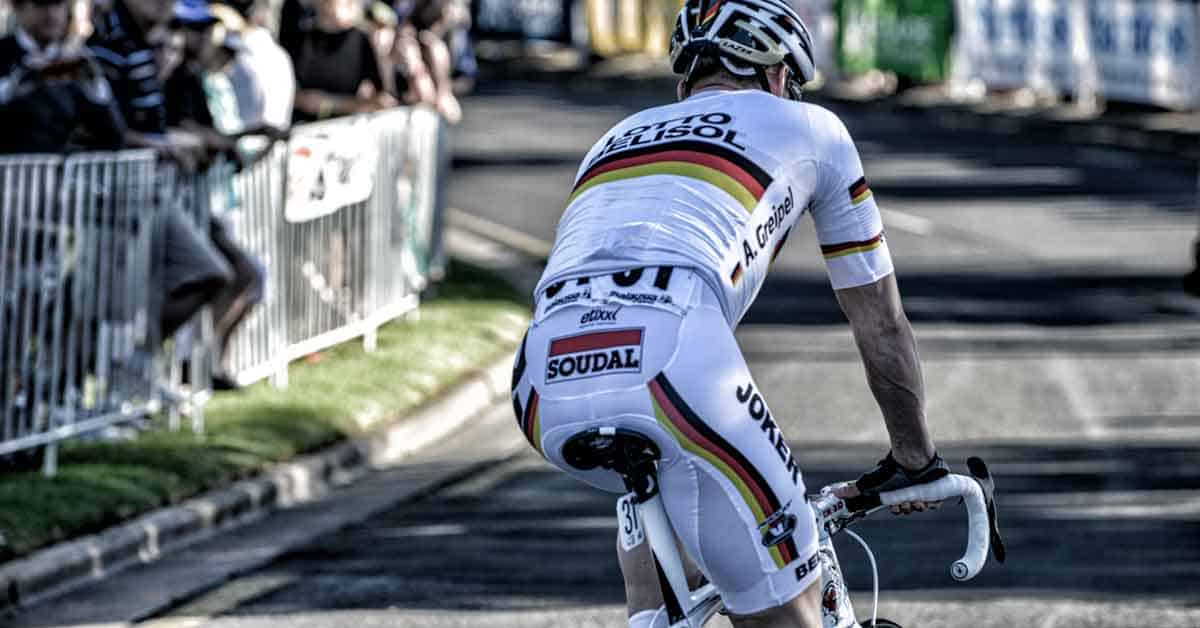When it comes to positioning your handlebars, comfort and control play major roles. Steve Hogg explains the factors to look at (published Bicycling Australia July/August 2002).
When it comes to positioning your handlebars, comfort and control play major roles. Steve Hogg explains the factors to look at.
If you have applied the information in the first three articles of this series, then by now the biggest remaining question is, “Just where do the bars go?” The simple answer is: in the place that allows the rider to avail themselves of all the hand placement options, i.e. top of bars, brake hoods and in the drops, with ease. Lower is better, providing it can be achieved comfortably.
So what are the variables? They can be split into two categories: the human variables and equipment variables. These are:
- Hamstring and Lower Back Flexibility
- Upper Back and Neck Flexibility
- Length of Arms
- Breadth of Shoulders and Bar Size
- Breadth of Hand, and Bar Depth and Shape
- Bar Reach or Throw
- Brake Lever Placement and Finger Length
- Type of Riding
Many of these interact and overlap but one at a time is the only way they can be explained so here goes.
Hamstring and Lower Back Flexibility
We live in a western culture that is in love with sitting. We sit for six hours a day for 11 to 13 years at school. We sit at work, we sit going to work in car, bus, train or motorbike. We sit to eat a meal and to relax after work. We even sit for recreation on a bicycle. The upshot of this mode of living is that we live in a society where many, many people, certainly a majority, have tight hip flexors. There is great individual variation but generally speaking this is the case.
Your local chiropractor, physio, osteopath, sports doctor or masseur will tell you the same. Tight hip flexors can cause a chain reaction of postural changes that lead to tight hamstring muscles and tight lower backs. Anyone fitting this description will not be able to reach as low to the bars comfortably as they may if they were functionally better in this area. So the bars need to come up.
I see a lot of people with tight lower backs. Many of them, particularly the younger ones, have their bars quite low with heavily worn bar tape on the top of the bars and unmarked bar tape on the drops because they rarely get down there. They have made their choice, and it is as valid as any other, but what is the point of conforming to some aesthetic ideal of low bar placement if you live in a body that doesn’t conform to the functional ideal that allows low bars?
Upper Back and Neck Flexibility
Many people with dysfunctional lower backs gain most of their ability to bend forward from their middle and upper backs. Years of doing this often means a loss of ability to extend or flatten the upper thoracic curve of the spine. The greater the degree of upper thoracic spinal extension, the lower and further away the bars can be for a given rider. If this is not the case, the upper back below the neck will often be heading forward and down to the neck. This means that the rider will have to bend the neck further to lift the head and peer forward when on the drops of the bars.
As a rule of thumb, if you need to use more than 85-90% of the range of movement of the neck to look forward when your hands are on the drops, then the longer you are in that position, the more muscular tension will develop in your upper back, neck and shoulders. Maybe you’re a tough person and can cope mentally with ease with this discomfort. However, unnecessary muscular tension means blood flow and oxygen, or in other words heartbeats, are going to an area that isn’t contributing to propelling the bike. You will perform better if the bars come up high enough for you to look forward with ease and with a bit to spare.
Length of Arms
This is straightforward really. The longer your arms proportionally, the lower the handlebars can be for the level of structural functionality of any given rider. The converse is obviously true as well. As an example, some years ago a gent came to see me with a chronic degenerative condition of the vertebrae of the neck. He was contemplating major surgery in that area to resolve the problem and relieve the associated pain, but felt he should explore the non-surgical options first.
Functionally, he was much better than average with no notable tight spots and more than adequate range of movement in all of his major joints. The only thing atypical was his arm length, which was four to five cm shorter than I would expect as average for a man of his size. His position on the bike was okay too, other than his head was lower than his bum and 15 years of riding like this was the root cause of his neck problem.
By the time he left me, he looked like a ‘Euro Pro’ with a flat back and the whole bit. However, because of his short arms, the handlebars needed to be as high as the seat to achieve this. He still has a neck problem, but now he can live with it. Previously he couldn’t. This is an extreme example of what can happen if you force yourself into a position that puts a lot of pressure on the neck.
Breadth of Shoulders and Bar Size
Here’s another straightforward factor. The wider your shoulder span, joint to joint, the wider the bars that ideally should be used. Naturally, the narrower the shoulder width, the narrower the bar size.
Currently we are well served in Australia in the range of bar sizes available. Bars in 36 cm, 38 cm, 40 cm, 42 cm, 44 cm and 46 cm, measured centre to centre, are generally available, so there is petty much something for everyone.
Generally speaking, bar width should be such that with arms extended, elbows slightly bent and hands in drops, the hands are slightly further apart than the shoulder centres. There are valid reasons for varying this. Track riders often ride narrower bars than road riders so as to lessen the chance of locking bars when accelerating through narrow gaps. Riding bars a little wider than ideal is a personal preference for some road riders I know, though it does turn you into a bit of a wind sock.
The only trap with bar sizing is that there is no convention for measuring bar width. The sizes available, that I referred to earlier, were measured centre of bar to centre of bar. This is the method used by some manufacturers. There is another increasingly common method that is referred to as ‘edge to edge’ where the bar is measured from outside edge to outside edge. The conversion is simple. A 44 cm handlebar edge to edge equates with a 42 cm measured centre to centre. A 40 cm bar centre to centre equates with a 42 cm bar edge-to-edge, see Diagram 1.
Breadth of Hand, and Bar Depth and Shape
Handlebars come in a myriad of depths and drop shapes. Drop depths are usually referred to as shallow drop, medium drop or deep drop (see Diagram 2). Shallow drop bars have a depth of 13 cm or less, medium 14 cm and deep drop bars 15 cm or more. In general terms, these drop depths need to be matched to the width of your hand.
I say ‘in general terms’ because before the advent of anatomically shaped bars, life was simple. If you had wide hands you used a deep drop bar, small hands a shallow drop bar and so on. Occasionally you might have riders using a deep drop bar even though their hands were theoretically too small. This was because this allowed them to have the top of the bars comfortably high for seated climbing, but the extra leverage of the relatively lower drop for the jump when sprinting.
Anatomic bars have changed this to some degree. There are so many variations in shape and angle of the section that you grip that at the extremes, there arc bars that are a technically shallow drop, but the biggest hands will fit as well as technically deep bars that only moderately wide hands will fit. Choose what feels good and remember that most people have a different hand placement for going hard on the flat than they do for sprinting off the seat. Choose a bar that allows both and that you can get your hand well into.
Bar Reach or Throw
As you can see from Diagram 2, the reach of a handlebar is the distance between where the bar is clamped by the stem and the furthest forward point of the drop of the bar. Bars come in short, medium and long reach. I would define long reach as 75 mm or less, medium reach as 76-85 mm and long reach as 86 mm or more.
Personally, I prefer medium to long reach bars, as they allow a shorter and slightly higher position for seated climbing with the hands on top of the bar than a short reach bar for the same position on the drops. Obviously this affects stem length.
That doesn’t mean that short reach bars don’t have their place. Some people, particularly, but not exclusively small women with tight lower backs, find genital comfort can be compromised by the extra distance they have to reach forward in the drops of a long reach bar, relative to the tops, compared to a short reach bar.
As a complicating factor, some anatomically shaped bars have a shape that almost forces the hand into one position on the drops. In some cases this can mean that while measurably the bar may be long reach, in terms of hand placement potential, they must be considered short reach.
There is a myriad of bar shapes and reaches out there in the marketplace. It is beyond the ability of an article such as this to describe all the various brands and models and shapes. And a lot of them change every couple of years. Choose a bar that allows you to reach deep into the drops while going hard on the flat, allows whatever hand position you prefer for sprinting and allows you to position your brake hoods where you want them, which brings me to …
Brake Lever Placement and Finger Length
Let us assume you have your seat positioned ideally, your feet positioned ideally and your bar positioned ideally. Where do the brake hoods go? The ideal situation is that they should be placed to allow them to be reached with ease with relaxed shoulders, unlocked elbows and straight or only slightly bent wrists, whilst still allowing the brake levers to be reached with ease with hands in the drops. This is generally easily achievable for those with long fingers, but life is not so easy for the rest.
Many people with small hands ride shallow drop handlebars, which have a tighter radius bend where the levers are placed.
Additionally, many anatomic deep drop bars also have a tight radius bend where the brake levers are placed. The tight radius bend means that if the hoods are placed at a comfortable height, the shorter fingered riders cannot reach the brake levers with ease whilst on the drops, in many cases out there. In these cases there are a number of options.
One option is to change the bar to one with a more open radius bend in the drops. Sometimes this can solve that problem, but create others. Option two is to compromise and decide which of the two positions is more important, i.e. on the hood comfort or being able to reach the brakes easily with hands in the drops. Either choice is valid depending on what the rider most values.
Have a look at Mario Cipollini’s brake hood position sometime. They are unbelievably high in many races. I assume this is because he has his bars quite low to maximise his sprint, but needs somewhere comfortable to ride for the 150-250 km it takes to get to the sprint. I would be surprised if he can reach his brakes with any kind of ease from the drops. But, it works for him.
Campagnolo’s early aluminium bodied Ergo levers had a grub screw that allowed the span of the brake lever to be adjusted. This was deleted when they changed to composite Ergo bodies. I think Shimano have a low-end STI lever with adjustable span. Almost every MTB brake lever on the market has a span that is adjustable. The lack of this on quality road equipment is in my view, a glaring omission that disadvantages quite a number of people.
Type of Riding
For any given rider’s structural makeup, the bar height and reach to the bars that can be achieved comfortably depends on the time they spend on the bike. The same rider can happily live with much lower handlebars in a 20 lap scratch race on the track than the same person could manage on a 150 km race or training ride.
The simple message is put the bars where you can reach them without effort. Where this is will depend on body proportions and structural fitness (and seat position, but that’s another article). Lower is better for aerodynamics and leverage off the saddle, providing it is consistent with comfort. Lack of comfort often is also lack of efficiency because of unnecessary muscular recruitment.
Having your bars positioned uncomfortably causes you to pay a physical price for this. Sometimes if a problem is five or 10 years in the making, then the solution is not a five minute one. I see a lot of people like this.
Until next time, best of luck.






Leave A Comment